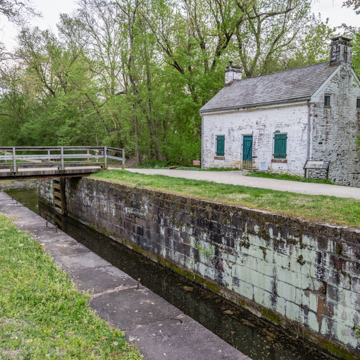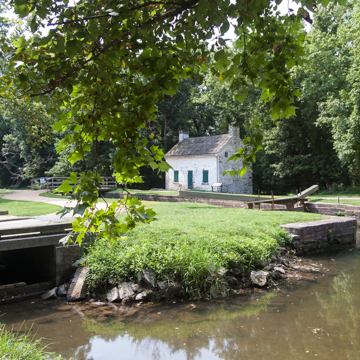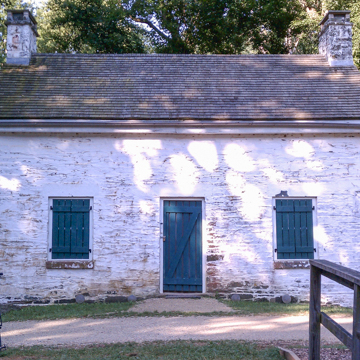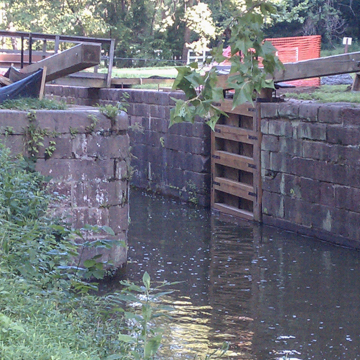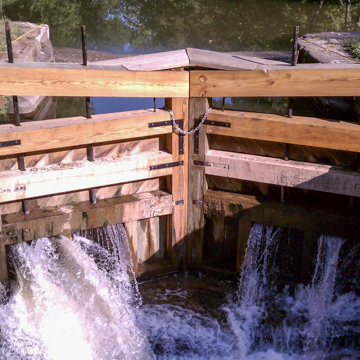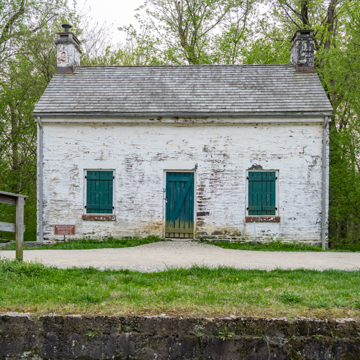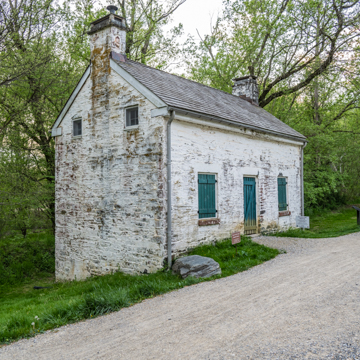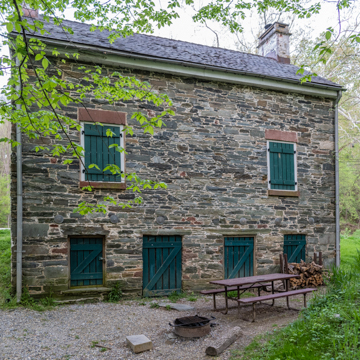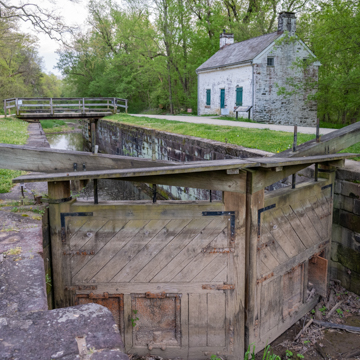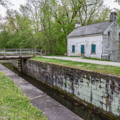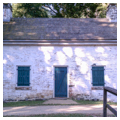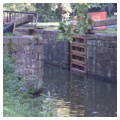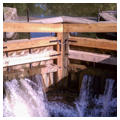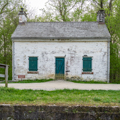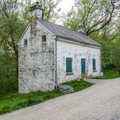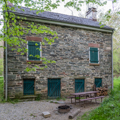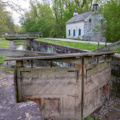The Potomac River Valley in western Maryland had been identified as a viable transportation corridor by the Potomac Canal Company, chartered in 1784 and first led by George Washington. Renewed interest in developing a canal along the Potomac led to formal establishment of the Chesapeake and Ohio Canal Company, which hired several men with Erie Canal experience and began construction in July 1828. Difficulties in obtaining rights-of-way, labor shortages, and challenging terrain slowed work, but by 1839, 134 miles had been completed. When the canal was officially completed in 1850, it had already been superseded by the newer technology of the B&O Railroad. Nevertheless, the canal was profitable for brief periods in the nineteenth century as it was used to transport goods, lime, stone, and coal from western Maryland to Washington.
The canal consisted of the canal prism with a berm on one side to provide a stable slope and a towpath on the other for the horse or mule to pull the boat along the canal. To overcome the 610-foot difference in elevation between Georgetown and Cumberland, 74 lift locks were needed to raise or lower boats. Four generations of locks have been identified along the canal, with Lock 22 and its accompanying lockhouse representing the initial 1828 design specifications, here constructed of local Seneca red sandstone. Lockhouse 22, which housed the lockkeeper and his family, also was built using the standard specifications developed by the canal company. The simple one-and-a-half-story side gable structure has whitewashed gray and red Seneca sandstone walls.
References
“Chesapeake & Ohio Canal, Lockhouse at Lock 22,” HABS No. MD-56-Q, Historic American Buildings Survey. Prints and Photographs Division, Library of Congress, Washington, D.C.















